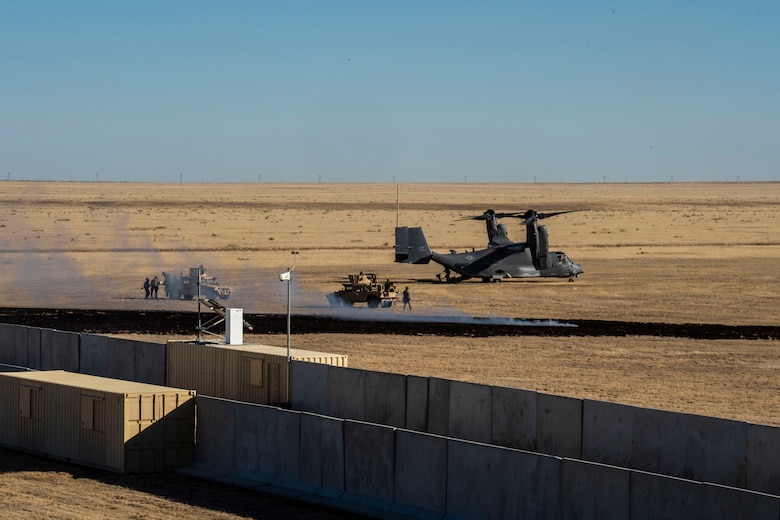The REPI program uses agreements with eligible entities, like cities and land trusts, to cost share mutually beneficial land easements within priority impact areas.
"Basically, it protects real estate in and around our installations to preserve training areas, maintain mission readiness and minimize land encroachment," said Alex Colby, Air Force REPI program chief.
Before AFCEC took charge of REPI in 2018, the program was split between three different locations, under different commands with no dedicated staff.
"It was kind of an additional duty for the Airmen assigned to work on the program, so there was no follow through. Everyone only had a part in the process," Colby said. "Now under AFCEC, it's all under one umbrella in basically a cradle-to-grave operation."
One project manager sees the process all the way through which ensures continuity and predictability for installations, partners and the local community when planning and executing agreements.
REPI has also seen a threefold increase in funding under AFCEC. In the last two years alone, the team secured an increase from $6 or $7 million to $32 million, which led to more partnerships and land easements.
REPI's success has also increased the number of participating bases looking to the program for help to protect their training areas, and it's led to some record-breaking efforts, Colby said.
"Last year we were able to preserve the 30,000 acres at Melrose Range, a critical training range for the Special Operations Command," Colby said. "It was the largest easement transaction in the history of the REPI program."
At Altus Air Force Base, Oklahoma, local city of Altus officials commended the REPI project manager there for working to secure easements on 480 acres of private property. When completed, the easements will provide the city of more than 18,000 residents access to multiple water wells to augment the local municipal water supply.
"Altus is located in an area where water can be scarce at times, and when these agreements go through, the city will have additional water to draw from during a drought," said Dan Gould, REPI program manager. "It's a win-win for everyone, since the city also provides the base with its water, where more than 7,000 Airmen, families and civilians support the Air Force mission there."
Colby said he believes more and more bases will look at the Altus and Melrose agreements and seek out the AFCEC-led REPI program for help to protect their own training areas.
With REPI now under one roof, it'll be easier to explore new possibilities and expand the program, he added.
"We're looking at things like using secured easements for solar farms, which would provide a source of energy to the local community and the bases we operate out of," Colby said. "With the program here at AFCEC, ideas like this are now a real possibility, and will ensure our bases are resilient and can meet training demands to keep our Airmen lethal and ready well into the future."

Special operations forces train to maintain readiness with the CV-22 Osprey aircraft at Melrose Air Force Range, N.M., Jan. 30, 2019. Training areas like Melrose Range are preserved with the help of the Air Force Civil Engineer Center's Readiness and Environmental Protection Integration program, which protects real estate in and around installations to preserve training areas, maintain mission readiness and minimize land encroachment. (U.S. Air Force photo by Staff Sgt. Luke Kitterman)

C-17 Globemaster III aircraft sit on the runway at Altus Air Force Base, Okla., March 31, 2020. The C-17 is one of the three types of aircraft used at the base for training the next generation of mobility Airmen. Missions like these are preserved with the help of the Air Force Civil Engineer Center's Readiness and Environmental Protection Integration program, which protects real estate in and around our installations to preserve training areas, maintain mission readiness and minimize land encroachment. (U.S. Air Force photo by Tech. Sgt. Kenneth Norman)






